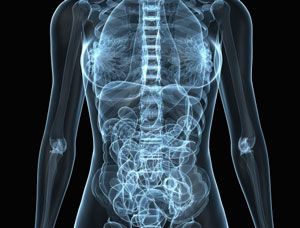Lymphoseek Approval Expanded to Breast Cancer and Melanoma
The FDA has expanded the approval of Lymphoseek (technetium Tc 99m tilmanocept) injection to include sentinel lymph node (SLN) detection for breast cancer and melanoma as well as lymphatic mapping in solid tumors.
DESCRIPTION

The FDA has expanded the approval of Lymphoseek (technetium Tc 99m tilmanocept) injection to include sentinel lymph node (SLN) detection for breast cancer and melanoma as well as lymphatic mapping in solid tumors. This action makes Lymphoseek the only FDA-approved radiopharmaceutical agent for SLN detection and the only FDA-approved agent for lymphatic mapping of solid tumors.
The FDA has also approved the use of Lymphoseek with or without scintigraphic imaging for pre-operative mapping of lymph nodes, aimed to facilitate node localization during surgical procedures.
In June, the FDA approved Lymphoseek to guide SLN biopsy in head and neck cancer patients with squamous cell carcinoma of the oral cavity.
“We are highly encouraged by the expanded FDA approval and believe that Lymphoseek now has the potential to become a standard-of-care in lymphatic mapping and SLN biopsy for the staging and prognosis of upwards of 1.2 million patients diagnosed with solid tumors annually in the US,” Michael Goldberg, MD, interim chief executive officer of Navidea, said in a statement.
The expanded approval of Lymphoseek was based on the results of several phase III clinical trials that compared the radiopharmaceutical to vital blue dye (VBD). The study looked at the concordance between the two tests for the number of nodes detected.
In breast cancer, an analysis of 148 total patients in 2 trials showed a concordance rate of 99.04% (P< 0.0001) between VBD and Lymphoseek. In the course of surgery, Lymphoseek detected 207 of the 209 SLNs detected by VBD. The authors on the study noted that Lymphoseek detected at least 1 SLN in 146 patients compared with VBD that detected at least 1 SLN in 131 patients (P< 0.0001).
In melanoma, an analysis of 154 total patients in 2 trials showed a concordance rate of 98.7% (P< 0.001) between VBD and Lymphoseek. Intraoperatively, Lymphoseek detected 232 of the 235 SLNs detected by VBD. Lymphoseek detected at least 1 SLN in 150 patients compared with VBD that detected at least 1 SLN in 131 patients (P= 0.002). SLNs showed the presence of melanoma in 22.1% of patients Lymphoseek detected all 45 melanoma-positive SLNs (100%), while VBD identified 80% (n = 36,P= 0.004).
Across all open-label, single-arm trials, 553 patients received Lymphoseek. In total, 0.7% (n = 4) of patients experienced injection site irritation and 0.2% (n = 1) of patients experienced pain. No serious adverse events associated with Lymphoseek have been reported to date.
“The ability of Lymphoseek to accurately identify sentinel lymph nodes in patients, demonstrated in clinical evidence from more than 500 patients, may not only improve diagnostic accuracy, but also enable more efficient and appropriate patient care and provide us with greater precision during surgery to detect lymph nodes with the highest likelihood of harboring tumor metastases,” Stephen Y. Lai, MD, PhD, FACS, associate professor, The University of Texas MD Anderson Cancer Center, said in a statement.
In its action letter, the FDA described a post-marketing requirement for the initiation of a study of pediatric patients with solid tumors with a target date for submission in 2018.